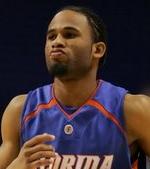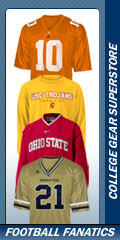 |
| SouthernCollegeSports.com |
| CONTACT SCS.com |
| SCS.com STORE |
| HOOPS FEATURES |
| TV Listings |
| HOOPS COLUMNS |
| Daniel |
| HOOPS LINKS |
| Live Scoreboard |
| Conference Standings |
| Top 25 Polls |
| FOOTBALL FEATURES |
| Free Pick'Em Contest |
| FOOTBALL COLUMNS |
| David |
| FOOTBALL LINKS |
| Live Scoreboard |
| Conference Standings |
| Top 25 and BCS Polls |
| Statistics |
| ABOUT US |
| The Work Force |
| Site Developed by AdcockDesign.com |
| WEAK SCHEDULES DAMAGE BUBBLE TEAMS' HOPES | |
| November 30, 2007 | |
| Daniel, SCS.com Staff Writer | Contact Daniel |
 Thereís nothing like the NCAA tournament bubble. Consisting of dozens of teams looking to sneak into the Dance as an at-large selection, the bubble provides college basketball fans with a little extra entertainment once the month of February rolls around. The odd part about the bubble is most of the teams inside of it probably wonít get past the tournamentís first weekend. Still, once the college basketball season hits the home stretch, teams on the bubble are looking for any possible edge to find a way into the field of 65.
Thereís nothing like the NCAA tournament bubble. Consisting of dozens of teams looking to sneak into the Dance as an at-large selection, the bubble provides college basketball fans with a little extra entertainment once the month of February rolls around. The odd part about the bubble is most of the teams inside of it probably wonít get past the tournamentís first weekend. Still, once the college basketball season hits the home stretch, teams on the bubble are looking for any possible edge to find a way into the field of 65.
Online and television analysts create ďresumesĒ to compare borderline tournament teams, as a way of deciding which teams deserve to make it. One of the most important parts of a teamís tournament resume is their Ratings Percentage Index standing, which takes into account winning percentage and strength of schedule. In addition to the RPI, the NCAA tournament selection committee takes into account how many marquee opponents a bubble team has beaten. For example, Texas Tech may be able to credit two huge victories over top 10 teams in Kansas and Texas A&M for its tournament appearance last season.
This is where a bubble teamís non-conference schedule comes into play. Picking up victories over quality opponents early in the season can come in handy when the selection committee makes its decisions. Just by scheduling games against top opponents, especially when these games are on the road, a teamís RPI can be given a nice boost. So even though Syracuse won 22 games last season, including 10 in the Big East, the Orange played just one non-conference game against an eventual NCAA tournament opponent last season (that was a 13 seed in Holy Cross), which came back to haunt them in March.
A weak schedule doesnít necessarily just affect the selection committeeís view of a team; it may also do an insufficient job of preparing a team for its conference season. Last season, the Connecticut Huskies were an extremely young and inexperienced group. Jim Calhounís team still entered the season ranked in the top 25, and during its non-conference schedule, the Huskies didnít lose a single game. The problem was, Connecticutís most challenging match-up proved to be against an Albany team that reached the NCAA tournament as a 13 seed. The weak schedule resulted in an abysmal conference record of 6-10 and no post-season for Jim Calhoun.
The following bubble teamsí schedules will undoubtedly hurt them later in the season:
Florida
These young Gators donít look anything like the Florida team of the past two seasons. Billy Donovanís club features just one returning player that averaged double digits in minutes per game last season, in junior Walter Hodge, the teamís lone upperclassman. The rest of this yearís team either played sparingly last year or were playing in high school. That doesnít mean Donovan isnít working with a talented group. Given some time, star freshmen like Nick Calathes and Jai Lucas could lead this team to a great deal of success in the future.
This season, though, Florida needs to build some confidence heading into SEC play. The Gators went overboard with this building confidence thing, however. Their non-conference schedule includes just three games against major-conference competition. Florida did beat Rutgers earlier this year, but does anyone really consider them a major-conference caliber team at this point in time? Another one of these major-conference teams, Florida State, already beat Florida last week, and it wasnít pretty. A Seminoles team not expected to finish anywhere higher than the middle of the pack in the ACC whooped the Gators in Gainsville, winning by 14 points. The last challenging test is a formidable Ohio State club, but the rest of the Gatorsí non-league games consist of the Jacksonville's and North Florida's of the world.
Florida will likely head into SEC play with a 13-2 record, assuming it loses on the road to Ohio State (thereíd need to be a rapid improvement from the Florida State game if Florida were to win this one), just seven wins away from the 20 win plateau. Forget about the amount of wins though, because now, with no big victories in the non-conference, there is an immense amount of pressure on the Gators to perform well in the conference, because if they donít, the tournament they have won the past two seasons wonít even invite them this season. Even if Florida does finish with a record above .500 in the SEC, it still might not be enough, because the SEC seems to be headed for somewhat of a down year this season. There wonít be many opportunities to gain valuable marquee victories to impress the selection committee.
Rhode Island
Led by leading scorer Will Daniels, as well as one of the nationís top three point shooters in Jimmy Baron, the Rams nearly earned the Atlantic 10ís automatic bid last season, falling a game short of taking the conference tournament outright. Entering this season, Rhode Island seemed to be one of the most likely teams to earn its conference a second bid in the NCAA tournament. If the Rams were serious about making a run for the tournament, wouldnít it seem obvious for them to schedule several games against big-time opponents in an effort to catch the attention of the selection committee, especially not having the advantage of playing in a prestigious conference?
Instead, the only challenges outside of the conference for Rhode Island are Syracuse, Boston College and Providence. The Rams already went on the road and lost to Boston College, so now they have just two more opportunities to knock off a big-name opponent. If they come away without a victory against Syracuse and Providence, they may not be able to make the NCAA tournament unless they earn an automatic bid, which could be especially tough with Xavier also in the Atlantic-10.
Vanderbilt
Even though star Derrick Byars may not be around anymore, the Commodores entered this season with expectations to compete for an NCAA tournament bid. Just like the Gators' situation, if Vandy tanks a bit in the conference and finishes around .500, the Big Dance may be out of reach. Vanderbiltís non-conference slate features an average Bradley team, a few sleepers in Austin Peay and South Alabama, and three major-conference teams in Depaul, Georgia Tech and Wake Forest. In a nutshell, Kevin Stallingsí team gets to play one of the Big Eastís worst teams, one of the ACCís worst teams, a middle of the pack ACC team, and a few nice mid-major teams - the rest are cupcakes.
Again, with the SEC not as strong as it traditionally is this season, Vanderbilt wonít have many chances to pick up big victories in conference play. And there arenít any chances whatsoever to impress the selection committee outside of the conference. Vanderbilt may enter conference play with around 15 wins, and this could be a team that finishes with 23-25 wins overall. That might not even be enough, though, considering how bad this teamís non-conference schedule is and the state of the SEC right now.
Stanford
When Brook Lopez returns to the team for the second semester after being academically ineligible, this will be a team with one of the scariest frontcourts in the entire country. But their non-conference slate is inexcusable, and it may come back to haunt them during Pac-10 play. Stanford plays just three games against major-conference competition, and played another against respectable game against Siena, who already knocked them off earlier this year. Colorado and Northwestern, two of Stanfordís early season opponents, just might be the worst teams in their respective conferences. The other ďmarqueeĒ game, and I use that term extremely loosely, is against Texas Tech, a solid team that still probably wonít finish higher than the middle of the conference.
Instead of testing itself by playing a difficult opponent, Stanford decided to go with a few Ivy League schools in Yale and Harvard and some other games against teams like Northwestern State and Colorado State. How can this team be expected to compete at all in the Pac-10 if it wonít play anybody? Texas Tech and Siena, the Cardinalís two toughest games in non-league play, would finish in the cellar of the Pac-10. When UCLA comes rolling into Palo Alto on January 3, and USC comes to town a few days later for Stanfordís first two conference games, the Cardinal will not even be close to the level of preparation needed to face this type of competition. Iíll say it now - Stanford doesnít stand a chance. And you can hold me to those words.
Other notably weak schedules from power-conference teams, not necessarily on the bubble:
Washington State: Road games against Baylor and Gonzaga are nice, but thatís it for the Cougars. Luckily for this team, it is good enough to prove its lofty ranking in conference play.
Oregon: Western Michigan, St. Maryís, and Utah might be able to sneak into the tournament somehow, but Kansas State is the only real contender on Oregonís early season schedule.
Villanova: Losing to North Carolina State means the Wildcats wonít have another opportunity for a big win until Big East play.

|
SCS.com STORE
|
| ITEMS OF INTEREST |
| Write for SCS.com |
| In the Media |
| Player Testimonials |
| Audio Clip Archive |
| Team Addresses |
| Free Audio Links |
| D-I FB Location Map |
| Related Links |
| NCAA Autographs |
| SCS.com Archives |
| Advertise With Us |
| CONFERENCES |
| ACC |
| Big East |
| Big Ten |
| Big XII |
| Conference USA |
| MAC |
| Mountain West |
| PAC 12 |
| SEC |
| Sun Belt |
| WAC |
| [MORE] |
| CHRIST IN SPORTS |
| FCA.org |
| TheNCCAA.org |
| Athletes in Action |
| MoreThanWinning |
| Upward.org |
| Place your ad here. Contact SCS.com for more info. |
| Copyright © 2004-2009 SouthernCollegeSports.com. All rights reserved. This website is an unofficial and independently operated source of news and information not affiliated with any school, team, or league. |